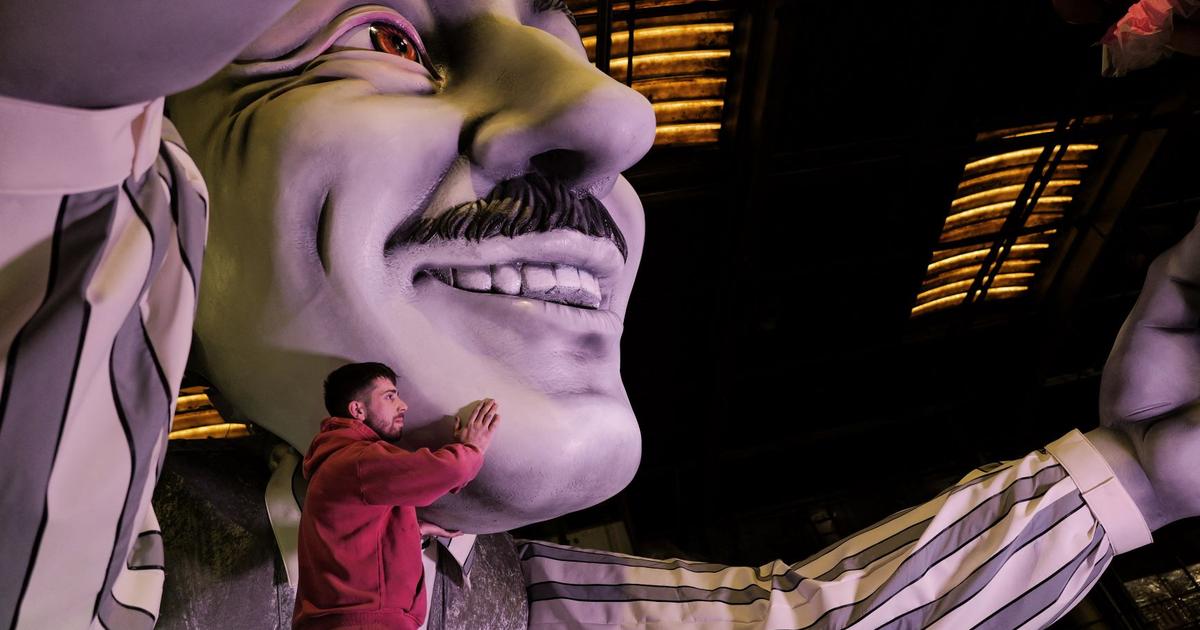The good old tank, with its diesel engine of an agricultural tractor and its fumes interfering among the rains of confetti and the stands, will it soon be a thing of the past?
The competition is sharpening: the next Nice carnival, which will celebrate its 150th anniversary from February 10 to 26, is preparing to test electric motorization for the first time on two floats in the battle of flowers, including that of the Queen.
While waiting for the starting signal, we are working on the final adjustments in the Halle Spamma, one of the two carnival manufacturing sites.
“It will be a Nivelât model, not Tesla”, laughs Gilles Povigna, a historic reveler of the vintage, showing the electrified machine, almost ready.
8 m long, it looks like a barge, very flat, on wheels, surrounded by metal beams, with its steering wheel at the front.
Are the King and Queen too big?
“We created this platform entirely.
The decoration on the theme of the Venus de Milo will be placed on it.
An engine supplier adapted to our requests: 3 tonnes of loads, 6% gradients, a turning radius of 33 degrees”, explains the specialist.
A second model will be adapted on an old platform, just to make these vehicles "used only a few hours a year" profitable.
The idea is obviously to generalize electrification.
As long as it works.
“There is a certain economic cost, here 28,000 euros per model, notes Gille Povigna.
It is unclear how the range of the engine, 60 km, will evolve after multiple stops and restarts during the parade.
It will be a real test.
For the floats of the King or the Queen of the carnival, there would be the difficulty of the weight.
But we are moving forward.
»
The polystyrene dust produced by the robot that sculpts the decorations and characters is sucked up and transformed into sticks.
At the end of the carnival, these same sticks will be sent to the manufacturer who will transform them into polystyrene blocks.
LP/Matthias Galante
This initiative, wanted by the town hall, accompanies in any case a delicate movement, started to try to green an event, by definition, rather difficult to make completely green.
Each company working on the event must commit, for example, to respecting an environmental charter.
A minimum.
The chemical smells, omnipresent in the aisles of the Maison du Carnaval where the decorations are painted, as well as the respiratory masks on the faces of the workers remind us that the case is far from won.
“Our profession diverts and adapts products intended for another use, explains Gilles Povigna.
We now use acrylic paints, therefore water-based.
But we can't find effective organic glues and we don't know how to replace the resins, which are practical and resistant to bad weather, applied to the polystyrene sculptures before painting..."
Polystyrene, it goes away and it comes back
Polystyrene precisely, which has more or less replaced cardboard and has established itself as the main raw material, fortunately has a very regulated recycling channel.
Machines suck up the huge quantities of dust produced by the robot responsible for sculpting sets and characters, then transform them into logs.
More than 50 pallets will accumulate in a room.
At the end of the carnival, the manufacturer will collect them to make them into real polystyrene blocks.
Who knows, the future big heads may be reborn from this dust.





